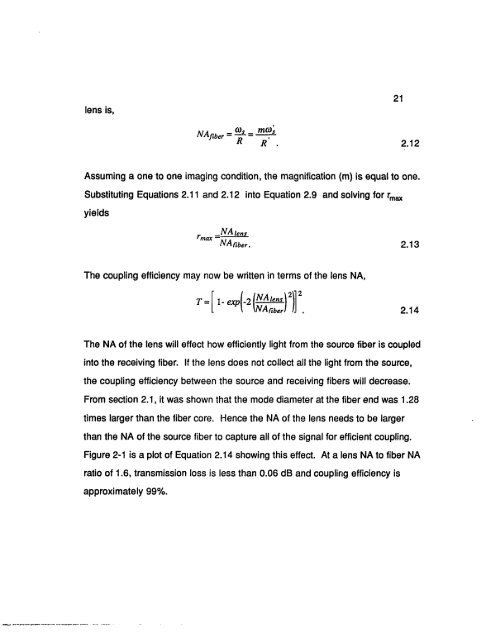azu_td_1349475_sip1_... - Arizona Campus Repository
azu_td_1349475_sip1_... - Arizona Campus Repository
azu_td_1349475_sip1_... - Arizona Campus Repository
Create successful ePaper yourself
Turn your PDF publications into a flip-book with our unique Google optimized e-Paper software.
lens is,<br />
21<br />
NAflber = ^=m^.<br />
R<br />
R . 2.12<br />
Assuming a one to one imaging condition, the magnification (m) is equal to one.<br />
Substituting Equations 2.11 and 2.12 into Equation 2.9 and solving for r max<br />
yields<br />
2.13<br />
The coupling efficiency may now be written in terms of the lens NA,<br />
2.14<br />
The NA of the lens will effect how efficiently light from the source fiber is coupled<br />
into the receiving fiber. If the lens does not collect all the light from the source,<br />
the coupling efficiency between the source and receiving fibers will decrease.<br />
From section 2.1, it was shown that the mode diameter at the fiber end was 1.28<br />
times larger than the fiber core. Hence the NA of the lens needs to be larger<br />
than the NA of the source fiber to capture all of the signal for efficient coupling.<br />
Figure 2-1 is a plot of Equation 2.14 showing this effect. At a lens NA to fiber NA<br />
ratio of 1.6, transmission loss is less than 0.06 dB and coupling efficiency is<br />
approximately 99%.
















